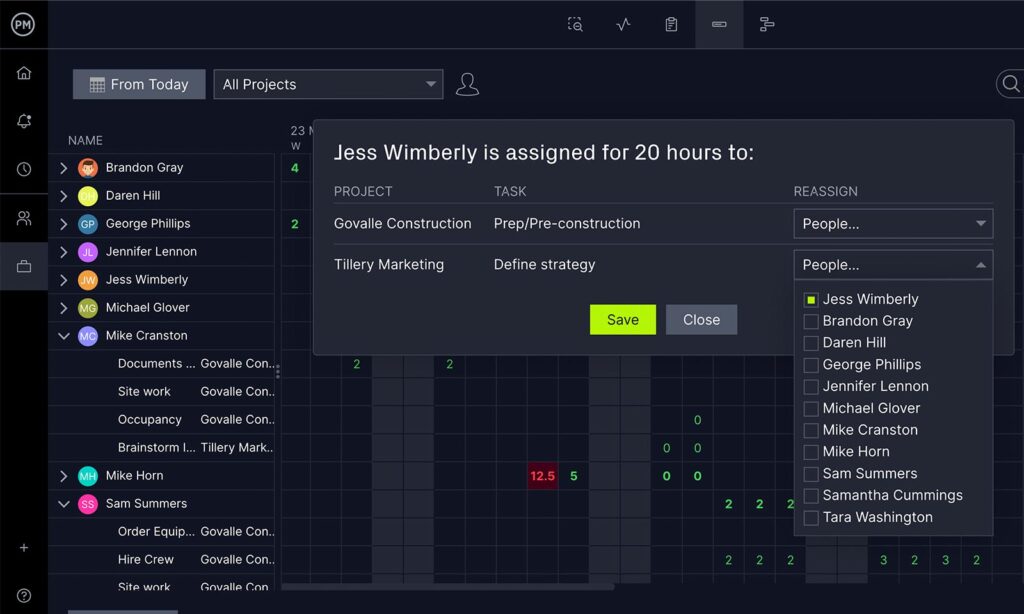Creating a Prioritization Matrix: Tools for Better Decision Making

Understanding the Prioritization Matrix
In today’s fast-paced world, the ability to make informed and efficient decisions is more crucial than ever. Faced with a barrage of tasks, options, and potential outcomes, individuals and organizations alike can often feel paralyzed by the sheer volume of choices. Enter the prioritization matrix, a vital tool designed to streamline this process. This matrix serves as a strategic guide, allowing users to visually organize and assess their tasks or projects based on their urgency and importance.
Key Features of a Prioritization Matrix
A prioritization matrix is not just a simple grid; it is a structured method of categorizing tasks that emphasizes several vital aspects:
- Clarity: It clarifies what needs immediate attention versus what can wait, helping individuals and teams to make informed choices quickly. For example, in a corporate setting, a marketing team could place tasks like launching a campaign on social media in the “high priority” quadrant, while planning for next quarter’s budget might fall into a “low priority” category.
- Objective Evaluation: By providing a systematic framework, the matrix minimizes the influence of personal feelings or biases. This objective lens is crucial in business environments where decisions must be based on data and performance metrics. For instance, a product manager can analyze user feedback and sales data to prioritize product features objectively.
- Enhanced Focus: By directing efforts toward what truly drives impact, the matrix fosters a culture of productivity. If a startup team focuses on enhancing their customer service experience, as flagged in their matrix, this can lead to higher customer satisfaction rates and better retention.
Practical Methods for Implementation
There are various methodologies to create your prioritization matrix, each suited to different contexts. The Eisenhower Box, popularized by former U.S. president Dwight D. Eisenhower, divides tasks into four quadrants: urgent and important, important but not urgent, urgent but not important, and neither urgent nor important. On the other hand, the MoSCoW method—which categorizes items into Must have, Should have, Could have, and Won’t have—proves useful in project management.
With challenging economic landscapes and ever-increasing competition, the ability to make swift, informed decisions is paramount. Utilizing a prioritization matrix not only enhances clarity but can also provide a decisive competitive advantage in various domains—be it business, academic, or personal life.
Curious about how to implement this tool effectively? Stay tuned as we will delve deeper into step-by-step guides and real-world examples of a prioritization matrix’s positive impacts on decision-making.

Designing Your Prioritization Matrix
Creating an effective prioritization matrix requires a thoughtful approach, as it is essential to define the criteria that will guide your decision-making process. Whether you’re in a corporate environment, managing a project, or simply trying to maximize personal productivity, the initial step involves understanding the specific needs and challenges that you face. This understanding allows for a more personalized and efficient application of the matrix.
Defining Criteria for Prioritization
When setting up your prioritization matrix, the first aspect to address is the criteria you will use to evaluate tasks or projects. Here are several factors to consider when defining your prioritization standards:
- Impact: Evaluate how each task contributes to your overall goals or objectives. Tasks that provide significant benefits, such as increasing revenue or improving customer satisfaction, should be prioritized higher.
- Urgency: Determine which tasks demand immediate action. A deadline-driven environment often necessitates that certain tasks take precedence over others, regardless of their overall importance.
- Resources Required: Assess the amount of time, workforce, and financial resources necessary to complete each task. Understanding the resource allocation can help avoid bottlenecks later in the process.
- Dependencies: Consider any interdependencies among tasks. Some projects may rely on the completion of others, making it crucial to prioritize tasks accordingly to maintain workflow continuity.
By identifying these criteria, you set the groundwork for a more informed evaluation process that can lead to better decision-making outcomes. For instance, if a team debates whether to focus on product development or marketing, an examination of the impact and urgency of each can clarify the path forward. A well-defined criterion helps ensure that important discussions are driven by data rather than subjective opinion.
Building the Matrix
After determining your evaluation criteria, it’s time to construct the prioritization matrix itself. A simple yet highly effective way to visualize tasks is to create a two-axis grid. One axis represents urgency, while the other reflects importance. Tasks can then be plotted within this grid, falling into one of four quadrants:
- High Urgency, High Importance: Tasks that must be addressed immediately.
- High Urgency, Low Importance: Tasks that are time-sensitive but not critical for long-term success.
- Low Urgency, High Importance: Strategic initiatives that contribute to overall goals but can be scheduled for later.
- Low Urgency, Low Importance: Tasks that can be postponed or delegated.
This grid not only simplifies prioritization but also improves communication among team members, as everyone has a visual reference to understand the priorities at play. In practice, organizations using a prioritization matrix report increased efficiency and reduced decision-making time, establishing a culture of transparency and accountability.
As you embark on building your own prioritization matrix, remember that flexibility is key. Regularly revisiting and adjusting your criteria and tasks ensures that the matrix continues to align with your evolving objectives and the dynamic environment in which you operate.
Creating a Prioritization Matrix is a strategic approach that significantly enhances decision-making efficiency across various sectors. By utilizing a **Prioritization Matrix**, individuals and teams can visualize their options, enabling them to allocate resources and attention where they are most needed. Let’s delve into some of the key advantages of employing this effective tool in our decision-making processes.
| Category | Key Features and Benefits |
|---|---|
| Clarity in Decision Making | The Prioritization Matrix offers a clear framework to compare various options, reducing ambiguity and enhancing focus on critical tasks. |
| Enhanced Resource Allocation | By visualizing priorities, teams can allocate both time and resources more judiciously, ensuring that high-impact initiatives receive the attention they deserve. |
| Improved Team Collaboration | Using the matrix fosters collaboration as it brings all team members into the discussion, thereby enhancing buy-in and shared understanding of priorities. |
| Flexibility and Adaptation | The dynamic nature of a Prioritization Matrix allows teams to adjust their priorities as projects evolve, enabling them to remain agile in the face of new challenges. |
By embracing the benefits highlighted in the table above, organizations can leverage the power of the Prioritization Matrix to transform decision-making processes. This tool not only enhances efficiency but also places emphasis on effective communication and operational excellence. Understanding these advantages may inspire teams to implement the matrix in their workflows, driving better outcomes in an increasingly complex environment.
Implementing Your Prioritization Matrix
With your prioritization matrix designed, the next vital step is implementation. Translating your matrix from a theoretical model into actionable steps often proves to be the most challenging aspect. It’s essential to communicate the matrix’s purpose and methodology effectively to your team or stakeholders to foster commitment and understanding of its benefits.
Engaging Your Team
A successful implementation begins with engaging your team. It is not merely enough to present the final version of your matrix and expect buy-in. Facilitate meetings to discuss the criteria and the rationale behind chosen evaluations. Allow team members to provide input, as their unique insights can illuminate aspects that may have been overlooked. For instance, if a marketing team is involved, they may weigh the impact of brand visibility more heavily than anticipated, thus refining the criteria to be more representative of collective values.
Utilizing collaborative tools like Google Sheets or Trello can further enhance team engagement. These platforms allow real-time updates and comments, ensuring that all opinions are accounted for and that everyone is on the same page throughout the prioritization process.
Regular Review and Adjustment
The dynamic nature of tasks and projects often requires a periodic review of the prioritization matrix. Situational changes, market conditions, or organizational shifts can all influence priorities. Regularly assessing the criteria and task status not only keeps the matrix relevant but also promotes a proactive workflow. As a best practice, incorporate a review schedule into your project management routine. This can be monthly or quarterly, depending on the velocity of your projects.
In practice, organizations that have institutionalized regular reviews report higher levels of productivity and employee satisfaction. For example, a software development company might implement bi-weekly check-ins to adjust their matrix based on sprint outcomes or changes in client demands.
Utilizing Advanced Tools and Software
To further streamline your prioritization process, consider leveraging advanced tools and software specifically designed for project and task management. Applications like Asana, Monday.com, and Jira often offer built-in prioritization features, allowing teams to visualize and rank tasks based on custom criteria. The integration of automated notifications can also remind teams of approaching deadlines for high-urgency tasks, ensuring that nothing slips through the cracks.
For more intricate projects, you might explore specialized prioritization frameworks such as RICE (Reach, Impact, Confidence, Effort) or the MoSCoW method (Must have, Should have, Could have, Won’t have). These frameworks provide a structured approach to prioritization and can be integrated into your matrix for a more nuanced decision-making process.
Measuring Success and Outcomes
Finally, the success of a prioritization matrix is measured not just in task completion but in achieving overarching goals. Define key performance indicators (KPIs) that align with the impact criteria you established. For example, if your matrix prioritizes a product launch, relevant KPIs might include user acquisition rates post-launch or engagement levels with the new features.
Gathering data on the outcomes of prioritized tasks provides invaluable feedback to refine your matrix continually. This feedback loop enhances your matrix’s effectiveness as you gain insights into what works and what doesn’t, allowing for data-driven adjustments to be made over time.
Conclusion
In the ever-evolving landscape of project management, creating a prioritization matrix stands out as a critical tool for enhancing decision-making processes. By emphasizing the importance of engagement, regular reviews, and advanced tools, organizations can ensure that they remain nimble and effective in addressing the shifting demands of their tasks and projects. Implementing a prioritization matrix is not just about ranking tasks; it’s about fostering collaboration, transparency, and a shared understanding among team members.
The integration of technology amplifies this approach, with platforms like Asana and Trello offering intuitive interfaces for visualizing priorities. Furthermore, utilizing established frameworks such as RICE and MoSCoW allows for a deeper analysis of project requirements and potential impacts, paving the way for smarter, data-driven decisions.
Success hinges on the continuous measurement of outcomes against key performance indicators (KPIs) that align with organizational goals. By establishing a feedback loop to analyze these KPI results, teams can refine their approach, ensuring the prioritization matrix—or any decision-making tool—remains relevant and impactful over time.
Ultimately, the ability to create and maintain an effective prioritization matrix equips teams with the capability to navigate challenges, maximizing productivity and driving success. In an age where information and tasks abound, those who master prioritization will emerge not only as leaders in their fields but also as pioneers of more effective decision-making methodologies.
Related posts:
Time Blocking: A Strategic Approach to Prioritizing Tasks
Balancing Personal and Professional Goals: A Guide to Effective Prioritization
The Impact of Mindfulness on Time Management and Task Prioritization
The Impact of Mindfulness on Time Management and Prioritization
The Role of Delegation in Effective Planning and Prioritization
Overcoming Procrastination: Strategies for Better Time Management

Linda Carter is a writer and time management specialist who helps professionals optimize their schedules and maximize productivity. With extensive experience in efficiency techniques and work-life balance strategies, she shares practical time management methods on our platform. Her goal is to empower readers with actionable systems to take control of their time, reduce stress, and achieve both professional and personal goals.